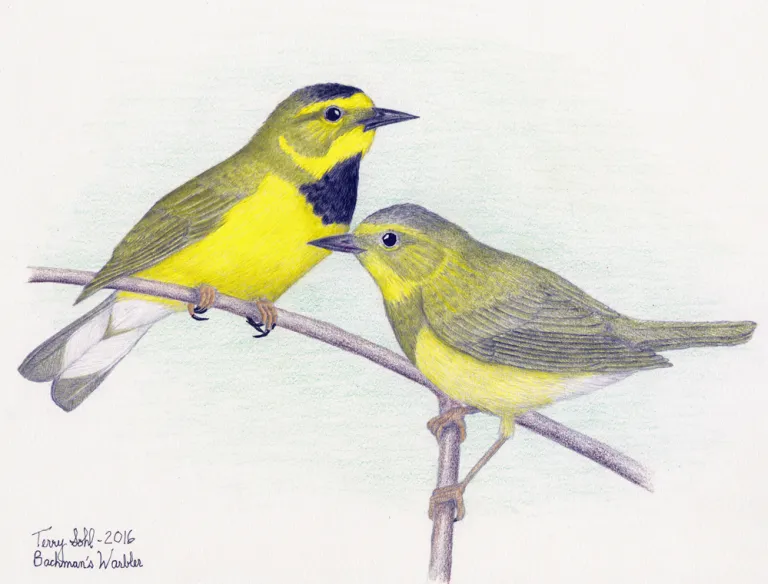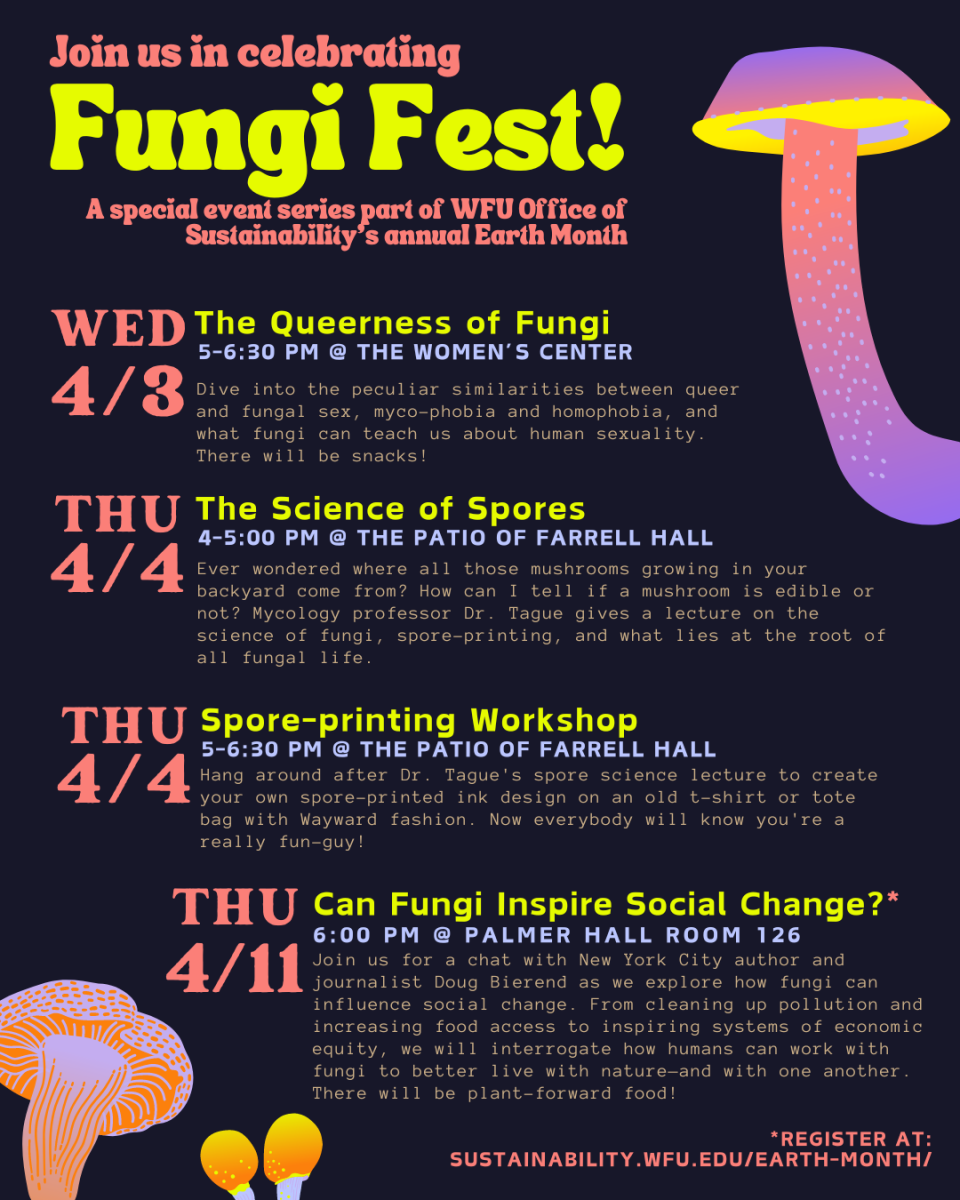The Bachman’s Warbler, an iconic songbird native to North Carolina, is unlikely to soar through Carolinian skies again. The species was originally discovered in Charleston, South Carolina, and bred in North Carolina. Known for its vibrant yellow underbelly and melodic song, the stunning warbler was last spotted in the United States in the 1960s.
Despite its abundance throughout the Carolinas as recently as the turn of the twentieth century, last October, it was officially declared extinct by the U.S. Fish and Wildlife Service (USFWS) — and it was not alone.
20 other species were removed from the Endangered Species Act protection list and added to the growing roster of extinctions in the United States.
“Many of these species were already known or at least suspected to be extinct,” said senior Matt Kline, an avid bird enthusiast, who was not surprised by the declaration.
Extinctions are not a new phenomenon. Globally, 9,052 known species have been declared extinct, with the last 11,7000 years marking the sixth recorded mass extinction event.
The loss of species poses a severe threat to life on Earth as we know it.
“Extinction is always a tragedy,” Kline said.
Given that the songbird hadn’t been seen in decades, the USFWS declaration was in fact expected. However, the extinction of 21 other species in conjunction demonstrates the increasing effects of habitat loss and climate change on biodiversity.
When species go extinct, entire ecosystems can collapse. Birds are no exception.
The Bachman’s Warbler was virtually non-existent in North Carolina by the 1950s and its rapid decline had a significant impact on North Carolina ecosystems during the first-half of the twentieth century.
According to a 2022 ScienceDirect article published by University of Exeter Professor Kevin J. Gaston, birds provide crucial ecosystem services such as seed dispersal, nutrient cycling, pest control and pollination. In the case of many songbirds, including the Bachman’s Warbler prior to its extinction, humans and other species rely on their insect-rich diets to keep pest population levels manageable.
[We] will never hear [the Bachman’s Warbler’s] song again. [We] will have to live with the knowledge that maybe if someone had cared a bit more, or done things differently, that species might still be around.
— Matt Kline, Class of 2024
Before its extinction, the Bachman’s Warbler was a migratory bird, meaning its impacts were felt across the Carolinas, where mosquitoes in particular are plentiful.
“Different birds play very different roles in our ecosystems,” Kline said. “Some control other species populations through predation, some pollinate plants and disperse seeds, some provide homes for other animals and some support populations of other predators.”
Junior Sophie Eldridge is a biology major, active environmentalist and founding member of the student-run climate club, dEaCO Friendly. She echoed Kline’s sentiment about the importance of species diversity to maintain both human and ecosystem health.
“A diverse community of pollinators is essential for crop production and feeding the billions of people around the world,” Eldridge told the Old Gold & Black via written message. “Also, species diversity is so important for ecosystem stability!”
Without birds, many of these key functions would be diminished or lost entirely. But birds aren’t unique in their vulnerability or importance — the Bachman’s Warbler’s extinction is merely a baseline for discussing what is at risk if we don’t take action to prevent further extinctions in the future.
While legislation like the United States Endangered Species Act (ESA) has been crucial in preserving species, it alone is not enough to prevent catastrophe. According to the US Environmental Protection Agency (EPA), the act, which was enacted in 1973, “provides a program for the conservation of threatened and endangered plants and animals and the habitats in which they are found.”
According to the US Department of the Interior, the ESA has been responsible for preventing the extinction of many species since its enactment. Species that have rebounded from the brink of extinction include the bald eagle, the Kirtland’s warbler and the American alligator.
Dr. Stan Meiburg is the executive director of The Andrew Sabin Family Center for Environment and Sustainability at Wake Forest. Meiburg worked for the EPA from 1977-2017 and served as the agency’s Acting Deputy Administrator from 2014-2017.
“The act gives the Secretary of the Interior authority to designate species as endangered or threatened, based on criteria in the act, and to designate critical habitat on which such species depend,” Meiburg said.

A species’ designation as endangered or threatened offers special protections under the law.
“These designations generally prohibit killings, or “takings,” of species on the endangered species list,” Meiburg explained.
Many countries around the world have laws similar to the ESA that protect both endangered species and habitats. Internationally, the Convention on International Trade in Endangered Species of Wild Fauna and Flora (CITES) seeks to prevent the trade of endangered species.
In addition to the ESA, the National Environmental Protection Act (NEPA) also offers ecosystem protection by requiring federal authorities and states using federal funds on a given project to assess environmental impacts prior to construction.
Currently, the USFWS lists 1,669 endangered or threatened species across the United States, including 92 species of birds alone. If more isn’t done to protect habitats and drastically reduce the impact of climate change around the world, many species could face a similar fate as the Bachman’s Warbler.
Despite its best efforts, US environmental legislation is imperfect, Meiburg insisted.
“On a broader level, while the ESA has been unable to prevent every extinction, and protection of critical habitat remains controversial, the ESA has given such species a ‘voice’ that they would not otherwise have had,” Meiburg said. “However, progress across the board on recovery efforts has been spotty at best.”
Currently, the USFWS lists 1,669 endangered or threatened species across the United States, including 92 species of birds alone. If more isn’t done to protect habitats and drastically reduce the impacts of climate change around the world, many species could face a similar fate as the Bachman’s Warbler.
But the loss surpasses ecological impact, and bird lovers like Kline are aware of that.
“[We] will never hear [the Bachman’s Warbler’s] song again,” Kline said. “[We] will have to live with the knowledge that maybe if someone had cared a bit more, or done things differently, that species might still be around.”








